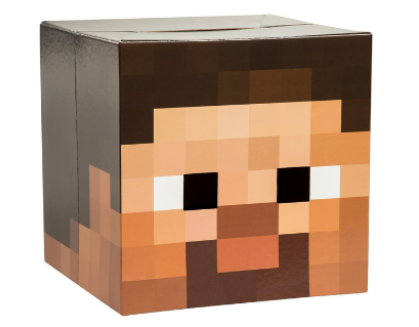Music in video games can stir excitement or set you on edge, often without you even realizing it. Think about how your heart speeds up during a tense action scene. That’s the soundtrack guiding your emotions, quietly steering your focus.
Games use music not as background noise but as a gaming partner. Melodies cue us that something is hidden, build suspense, or offer relief after a challenge. It’s why the right soundtrack sticks in your head long after the game ends.
This guide pulls the curtain back on how music and sound design shape every button press and jump scare. Dive in for concrete examples, insightful tips, and ways to tune your next gaming session more closely.
Music Directs Player Attention and Shapes Decisions Immediately
Soundtracks pull players toward key moments, helping you spot hidden paths or prep for enemy encounters. Composers design these musical cues intentionally, like dropping a bass line as an alert.
For example, in a platformer, a sudden shift to a minor key tells you, “watch out, something tricky’s coming up ahead”—alerting you to slow down and observe the terrain.
Signal Cues in Action-Adventure Games
An experienced gamer hears a high-pitched synth and thinks, “I’m close to a collectible.” Music guides attention more subtly than highlighted icons or pop-ups do.
Instead of a menu tip, let a crescendo signal urgency—like when a health bar drops or time starts running out. This keeps action immersive and natural for players.
Try listening for when music layers swap, noting what’s happening in your environment. You’ll notice how tightly music and cues tie together every successful checkpoint or surprising reveal.
Background Melodies that Encourage Exploration
Many open-world games use soft, persistent music to keep players engaged but not distracted. Gentle chords or ambient sounds serve as “exploration permission,” inviting you to look in every nook.
Let’s say you linger too long in one place—the music will subtly intensify, nudging you onward. It’s a light touch that gets you moving without words or obvious prompts.
Developers use this as a design trick, letting you explore at your own pace, but always with a friendly reminder to keep momentum and curiosity alive.
| Game Genre | Signature Cue | Player Reaction | Action Prompted |
|---|---|---|---|
| Platformer | Tense strings | Heightened alertness | Prepare for hazard |
| RPG | Lush theme | Sense of adventure | Explore area |
| Action | Rising tempo | Increased excitement | Engage in combat |
| Horror | Low rumbles | Unsettled feeling | Move cautiously |
| Puzzle | Playful chimes | Focus boosts | Solve with patience |
Momentum, Mood, and Mental Mapping: How Music Fuels Engagement
Music actively pushes gameplay forward, supporting the pace of movement and intensity of each level. Its tempo and instrumentation adjust to match every obstacle a player faces.
Designers structure musical motifs to build anticipation during exploration and reward risk-taking, fueling a rhythm that keeps attention locked in longer.
Motivating Players Through Tempo
Fast-paced tracks provide a rhythmic cue for quick movements and fast thinking. The soundtrack in a racing game, for example, matches the urgency you feel behind the wheel.
Action increases when beats per minute jump, signaling the shift from relaxed exploring to tense, time-sensitive missions and encouraging players to move decisively.
- Use tempo shifts to match gameplay speed—slower for stealth, faster for chase scenes—so players intuitively move at the right pace when prompted.
- Assign unique melodies to specific locations—players will remember these and navigate by sound, creating mental maps tied to musical cues.
- Pair dynamic soundtracks with interactive moments—timed music swells when a door opens or item is collected, making feedback unmissable.
- Integrate changes in music with visual feedback—when both change together, players notice transitions and key story beats more easily.
- Compose loopable tracks without abrupt endings—repetition keeps immersion intact, letting players lose themselves in exploration without distraction.
In practice, these actions help designers create seamless, engaging experiences that make replaying levels as enjoyable as the first time through.
Creating Emotional Anchors Using Leitmotifs
Leitmotifs are recurring themes tied to a character or location. In big story-driven games, hearing a familiar melody as a boss appears tells you instantly who’s on screen.
This technique builds emotional memory—players start associating tunes with certain feelings or story twists, without relying on dialogue or visual cues.
- Write short, recognizable melodies for main characters, creating instant recognition throughout the game’s narrative.
- Introduce variations of the melody in new situations—minor key for sad scenes, faster for action—letting mood shift while keeping identity intact.
- Reintroduce motifs at milestone moments, using music to reinforce narrative turning points and deepen player connection with the story.
- Let instrument choice signal changes—swap guitar for piano if a character is in a different emotional state.
- Tie memorable musical cues to player achievements, rewarding skill with a satisfying sonic payoff.
Practicing these steps attaches memory to music, so next time a theme plays, you’re right back in the story’s most crucial moments.
Soundtracks Build Layered Worlds You Want to Explore
Distinctive sound design makes digital spaces feel alive. Layered audio, from wind in trees to distant wells, immerses you in environments that invite closer inspection—creating a sense of presence beyond just graphics.
Different types of sounds define locations more clearly than visuals alone, letting you distinguish one setting from another and enriching gameplay with subtle details.
Environmental Immersion Through Spatial Audio
Spatial audio tricks your brain into “hearing” the room. For example, footsteps echo differently in caves than on city streets, grounding your sense of place naturally.
Try playing with headphones and listen for location markers—birds in forests, machinery in factories. Notice how your mood and anticipation shift as you move through these soundscapes.
That cueing doesn’t just add atmosphere; it preps you for what’s around the next corner, helping you anticipate events and unlock new gameplay strategies instinctively.
Interactive Audio That Reacts in Real-Time
Dynamic soundtracks respond to player input, changing as you move, attack, or complete objectives. Jump into water, and percussion drops away; attack an enemy, and the theme intensifies instantly.
This makes every run unique—music flows like a conversation, turning each session into something personal and fluid rather than static or scripted.
Listen for new instruments during boss fights or when the action peaks. Copy this in your own game or playlist—switch moods on cue to boost focus or relaxation wherever needed.
Comparing Musical Techniques in Famous Franchises
Known franchises stand out partly because of recognizable soundtrack signatures. Comparing music strategies across series can reveal what keeps players invested from one game to the next—and why memorable tunes matter so much.
For example, one franchise may lean on sweeping orchestral themes while another uses pulsing synths, each shaping a different kind of emotional response and play style.
| Franchise | Musical Signature | Impact on Play |
|---|---|---|
| Zelda | Orchestral, adventurous | Encourages bold exploration, reinforces heroics |
| Resident Evil | Ominous, minimalistic | Builds suspense, supports jump scares, slows movement |
| Final Fantasy | Melancholic, melodic themes | Adds emotional weight, signals major plot points |
This comparison shows that soundtracks aren’t interchangeable—choosing a style creates a unique identity that fuels nostalgia and future engagement.
Music as a Guide, Motivation, and Feedback Loop
Effective audio can replace or enhance tutorials. Instead of text tips, game sound can train players—like a musical version of red-green traffic lights for pacing, with success (and mistakes) clearly signaled.
Think of how classic platformers use a cheerful tune for safe zones, while danger gets a discordant motif—like color-coding, but for your ears and instincts.
Checkpoint chimes are tiny celebrations, reinforcing skill without breaking immersion. The best games balance feedback so it feels rewarding, not distracting—mirroring a coach’s pat on the back versus a referee’s whistle.
Realistic scenario: If a puzzle’s music shifts to a triumphant theme as the last piece clicks into place, repeat that pattern to reward yourself after finishing challenging tasks elsewhere.
Strategies for Integrating Standout Soundtracks
- Identify recurring motifs for each game area and use them as navigation aids. This lets players “hear” where they are even when visuals are obscured.
- Match soundtrack tempo with level tension—calm in safe spots, rapid in boss battles—to foster effortless emotional adjustment to new challenges.
- Compose transitions to blur loading screens—a seamless crossfade keeps engagement high, reducing the urge to check your phone or lose focus.
- Add dynamic instrumentation for player-driven events—unlocking new gear is celebrated by an audible flourish, reinforcing progress.
- Include memorable stingers for achievements, using consistent, non-jarring sounds to provide positive reinforcement and trigger long-term recall.
- Create spatial layering where sound travels differently based on player location, enhancing realism and environmental immersion naturally.
- Store sound cues in a low-memory audio bank for mobile titles, ensuring performance without sacrificing audio quality or feedback sharpness.
Using these techniques, developers can design games that not only sound great but actively improve player engagement, satisfaction, and retention.
For players, recognizing these patterns turns a passive soundtrack into an active part of strategy and enjoyment, deepening their connection to the game world.
Looking Ahead: Evolving Soundtrack Roles in Future Game Design
Advancements in adaptive AI-driven music suggest soundtracks will soon become even more personalized and responsive. Imagine orchestration that morphs to your style of play, mood, or even untapped skills in real time.
As VR and AR integration grows, spatialized and reactive audio will further blur the line between virtual and real experiences. Games might soon let you remix themes based on achievement or player emotion.
Indie studios are championing interactive music experiments: think games where a tone or beat changes with every jump, pause, or player choice—turning your playthrough into a unique, shareable musical diary.
With ongoing collaboration between composers and designers, the future promises dynamic worlds where music is both a narrative voice and a gameplay mechanic, never just a background track.
The Impact of Music on Memorable Gaming
Music and sound design define the personality of each game. Signature soundtracks anchor them in memory long after you set down the controller, adding resonance and weight to story, action, and lore.
Every note, motif, and carefully constructed ambient soundscape guides, motivates, and rewards your journey through digital landscapes. Sound turns repetitive tasks into rituals and challenges into milestones.
Developers, composers, and players mutually enrich this process through attention to detail and feedback, making each soundtrack a living part of the experience rather than a generic overlay.
The next time you play, listen with intent—identify cues, savor recurring melodies, and recognize how your experience evolves with each note.
Embracing the music behind the gameplay not only elevates strategy and immersion but transforms any game into an unforgettable auditory adventure.

